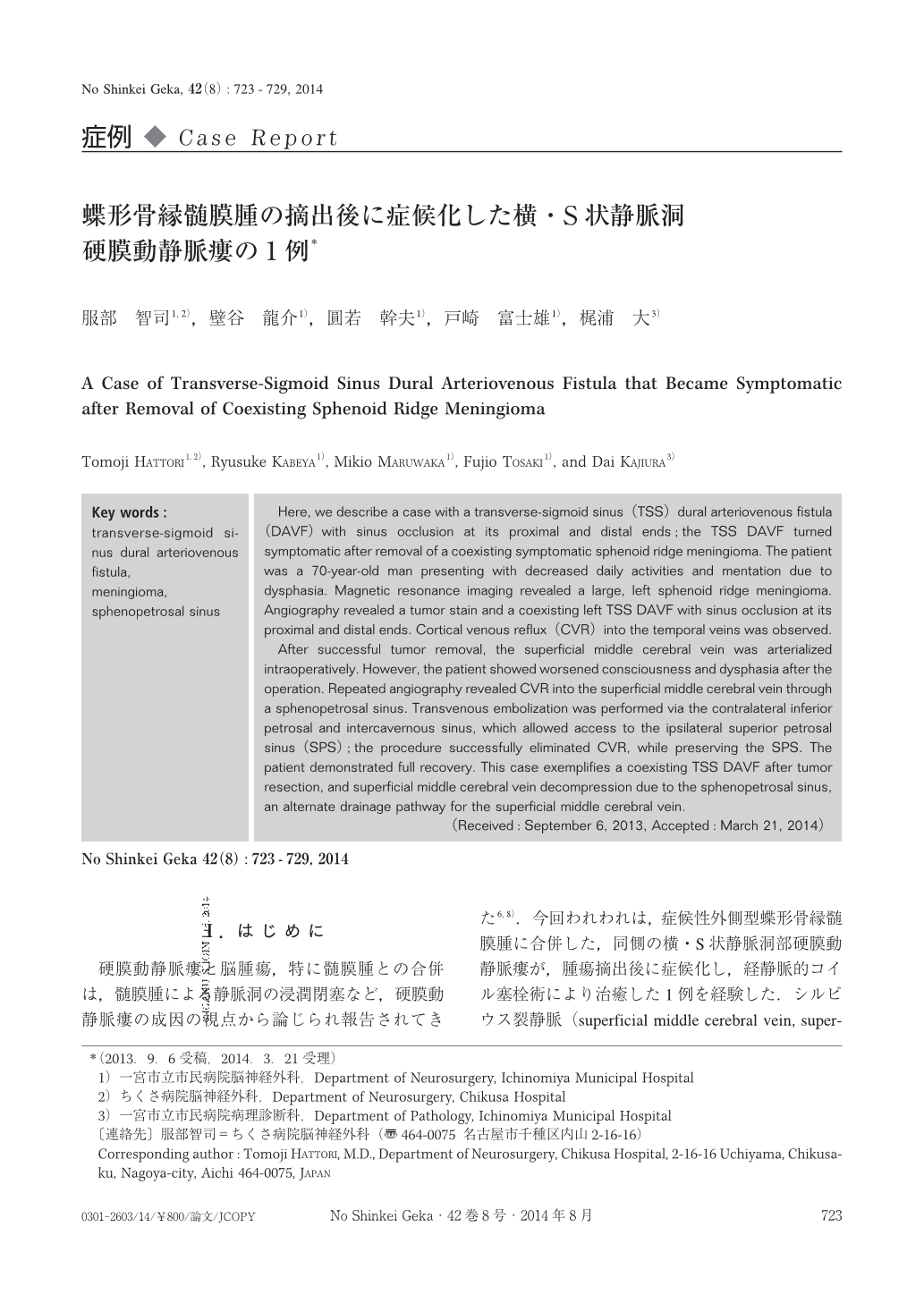Japanese
English
- 有料閲覧
- Abstract 文献概要
- 1ページ目 Look Inside
- 参考文献 Reference
Ⅰ.はじめに
硬膜動静脈瘻と脳腫瘍,特に髄膜腫との合併は,髄膜腫による静脈洞の浸潤閉塞など,硬膜動静脈瘻の成因の視点から論じられ報告されてきた6,8).今回われわれは,症候性外側型蝶形骨縁髄膜腫に合併した,同側の横・S状静脈洞部硬膜動静脈瘻が,腫瘍摘出後に症候化し,経静脈的コイル塞栓術により治癒した1例を経験した.シルビウス裂静脈(superficial middle cerebral vein, superficial sylvian vein)のドレナージ経路のバリエーションにより症候化した症例と考えられ,文献的考察を加えて報告する.
Here, we describe a case with a transverse-sigmoid sinus(TSS)dural arteriovenous fistula(DAVF)with sinus occlusion at its proximal and distal ends;the TSS DAVF turned symptomatic after removal of a coexisting symptomatic sphenoid ridge meningioma. The patient was a 70-year-old man presenting with decreased daily activities and mentation due to dysphasia. Magnetic resonance imaging revealed a large, left sphenoid ridge meningioma. Angiography revealed a tumor stain and a coexisting left TSS DAVF with sinus occlusion at its proximal and distal ends. Cortical venous reflux(CVR)into the temporal veins was observed.
After successful tumor removal, the superficial middle cerebral vein was arterialized intraoperatively. However, the patient showed worsened consciousness and dysphasia after the operation. Repeated angiography revealed CVR into the superficial middle cerebral vein through a sphenopetrosal sinus. Transvenous embolization was performed via the contralateral inferior petrosal and intercavernous sinus, which allowed access to the ipsilateral superior petrosal sinus(SPS);the procedure successfully eliminated CVR, while preserving the SPS. The patient demonstrated full recovery. This case exemplifies a coexisting TSS DAVF after tumor resection, and superficial middle cerebral vein decompression due to the sphenopetrosal sinus, an alternate drainage pathway for the superficial middle cerebral vein.

Copyright © 2014, Igaku-Shoin Ltd. All rights reserved.


